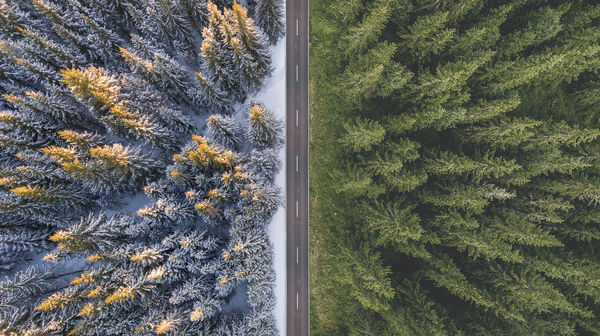Understanding the carbon dioxide flux in forest ecosystems has become an important subject in the international effort to prevent global warming. Observations of the carbon dioxide flux between the atmosphere and forests are promoted worldwide. The components of the carbon budget in a forest ecosystem - the carbon dioxide flux released from the forest floor and that released from or absorbed into foliage - are often measured with the chamber method. Accurate measurements of the carbon dioxide efflux from the forest floor are required especially because it accounts for a large part of the total carbon dioxide efflux from the forest ecosystem. However, the forest floor carbon dioxide efflux has a large spatial dispersion. Therefore, a large number of measurements at different locations are required to evaluate it. A compact and easy-to-operate CO2 sensor and a simple chamber system is an ideal solution for scientists measuring the carbon dioxide efflux at multiple sampling points.
In the beginning of our research, we attempted to use the Vaisala CARBOCAP® Carbon Dioxide Transmitter GMD20 or module GMM220 for measuring the forest floor carbon dioxide efflux. The performance of these sensors with regard to response time was insufficient for measuring the carbon dioxide efflux with an increasing rate of carbon dioxide concentration in the chamber. Therefore we developed a backward estimation method for recovering the delayed outputs (Mizoguchi and Ohtani, 2005). This method employs the initial carbon dioxide concentration and the compensation coefficient that has been obtained from the sensor response experiments, which enables the correction of the delayed output of the sensor. Thus, it solves the error of the efflux that is caused by the delayed response.
Snow surface measurements
However, even with this method, the error caused by the unstable output of the sensor cannot be totally excluded. In particular, the measurement method cannot be applied for measuring a snow surface with a small carbon dioxide efflux. Subsequently, we used a newly developed sensor - a diffusion type Vaisala CARBOCAP Carbon Dioxide Probe GMP343 - to measure the carbon dioxide efflux from a snow surface in the forest.
We generally calculate the efflux with an increasing rate for 10–30 min when using the static chamber method. The carbon dioxide concentration increased by about 30 ppm ten minutes after the chamber was closed. This indicates that the performance of the GMP343 was sufficient to measure even the small effluxes from a snow surface.
We plan to measure the efflux from the snow surface at many sampling points in our research forest, and evaluate the accurate carbon dioxide emission.
